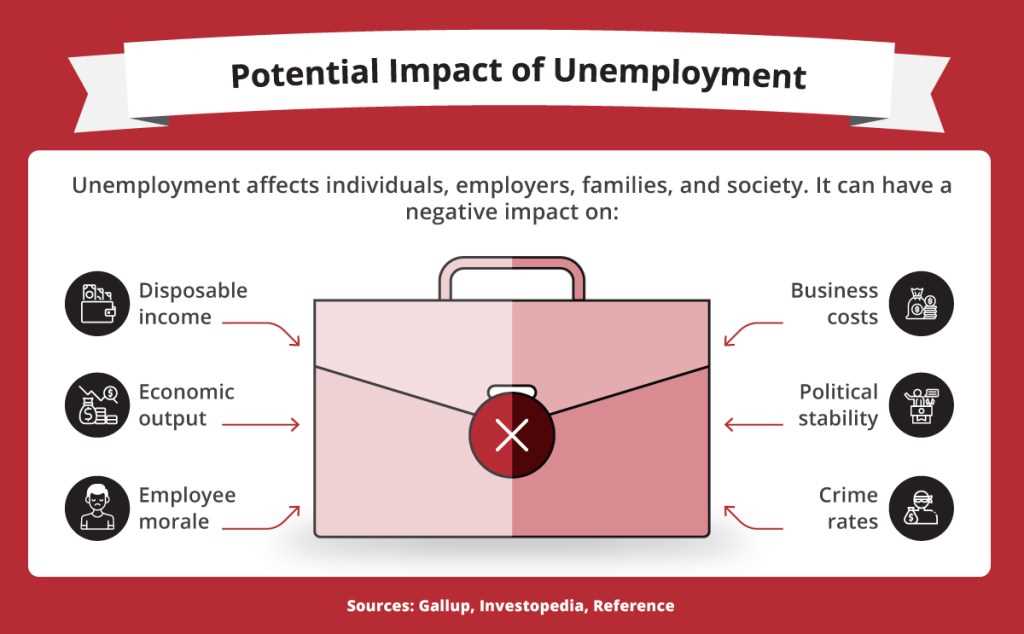Defining Full Employment

Full employment is a concept that refers to a situation in which all available labor resources in an economy are being utilized to their maximum potential. It is a state where there is no involuntary unemployment, meaning that everyone who is willing and able to work can find employment.
However, it is important to note that full employment does not mean zero unemployment. There will always be some level of unemployment in an economy due to factors such as frictional unemployment (temporary unemployment while workers search for new jobs) and structural unemployment (mismatch between the skills of workers and the available jobs).
Full employment is often seen as an important goal for policymakers, as it is believed to lead to various positive outcomes, such as higher economic growth, reduced poverty, and increased social stability. It is also considered a key indicator of a healthy and well-functioning economy.
Measuring Full Employment
Measuring full employment can be a complex task, as it requires taking into account various factors and indicators. One commonly used measure is the unemployment rate, which is the percentage of the labor force that is unemployed and actively seeking employment.
Policies to Achieve Full Employment
There are various policies that governments can implement to promote full employment. These policies can include fiscal measures, such as increased government spending on infrastructure projects or tax cuts to stimulate economic activity and create jobs.
Monetary policies, such as lowering interest rates or implementing quantitative easing, can also be used to encourage borrowing and investment, which can lead to job creation. Additionally, governments can invest in education and training programs to improve the skills of the workforce and reduce structural unemployment.
Overall, achieving and maintaining full employment is a complex and ongoing challenge for policymakers. It requires a combination of effective economic policies, investment in human capital, and a favorable business environment to create a strong and resilient labor market.
Types of Full Employment
Full employment can be categorized into different types based on various factors. Here are some of the common types of full employment:
- Classical Full Employment: This type of full employment is based on the classical economic theory, which suggests that in a free market economy, the labor market will naturally reach a state of full employment. According to this theory, any unemployment that exists is temporary and will be resolved through market mechanisms.
- Keynesian Full Employment: In contrast to the classical theory, Keynesian economics argues that full employment may not be achieved automatically in a market economy. It suggests that government intervention is necessary to stimulate aggregate demand and create jobs. Keynesian full employment focuses on achieving a level of employment where there is no involuntary unemployment.
- Structural Full Employment: Structural full employment refers to a situation where there is a match between the skills and qualifications of the workforce and the available job opportunities. It occurs when the economy is able to provide jobs for all individuals who are willing and able to work, considering their specific skills and qualifications.
- Frictional Full Employment: Frictional full employment occurs when there is a temporary mismatch between job seekers and job vacancies due to factors such as job search, relocation, or transitioning between jobs. It is a natural part of the labor market dynamics and is considered a normal level of unemployment.
- Voluntary Full Employment: Voluntary full employment refers to a situation where individuals choose not to participate in the labor market, either due to personal preferences, retirement, or other factors. It is a self-imposed form of unemployment and is not considered a problem from an economic perspective.
Real-Life Examples of Full Employment
Full employment is a concept that is often discussed in economic theory, but what does it look like in real-life examples? Here are a few instances where full employment has been achieved:
1. Post-World War II United States: Following World War II, the United States experienced a period of full employment. The war had created a high demand for goods and services, and the government implemented policies to stimulate economic growth. As a result, unemployment rates dropped significantly, and the economy boomed.
2. Norway: Norway is often cited as an example of a country that has achieved full employment. The Norwegian government has implemented policies that prioritize job creation and provide support for workers. As a result, the unemployment rate in Norway has remained consistently low, and the country has a strong labor market.
3. Japan: Japan is another country that has achieved full employment in the past. The Japanese government has implemented policies to promote economic growth and job creation. Additionally, Japan has a strong emphasis on education and training, which has helped to ensure a skilled workforce and low unemployment rates.
4. South Korea: South Korea is often praised for its ability to achieve full employment. The country has implemented policies to promote job creation and economic growth, and it has a strong emphasis on education and training. As a result, South Korea has been able to maintain low unemployment rates and a strong labor market.
5. Germany: Germany is known for its strong labor market and low unemployment rates. The German government has implemented policies that prioritize job creation and provide support for workers. Additionally, Germany has a strong emphasis on vocational training, which helps to ensure a skilled workforce. These factors have contributed to Germany’s ability to achieve full employment.

Emily Bibb simplifies finance through bestselling books and articles, bridging complex concepts for everyday understanding. Engaging audiences via social media, she shares insights for financial success. Active in seminars and philanthropy, Bibb aims to create a more financially informed society, driven by her passion for empowering others.
